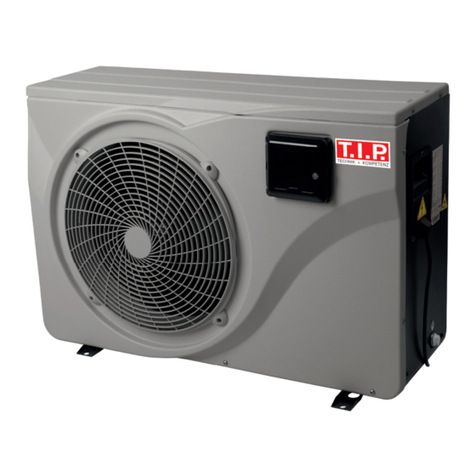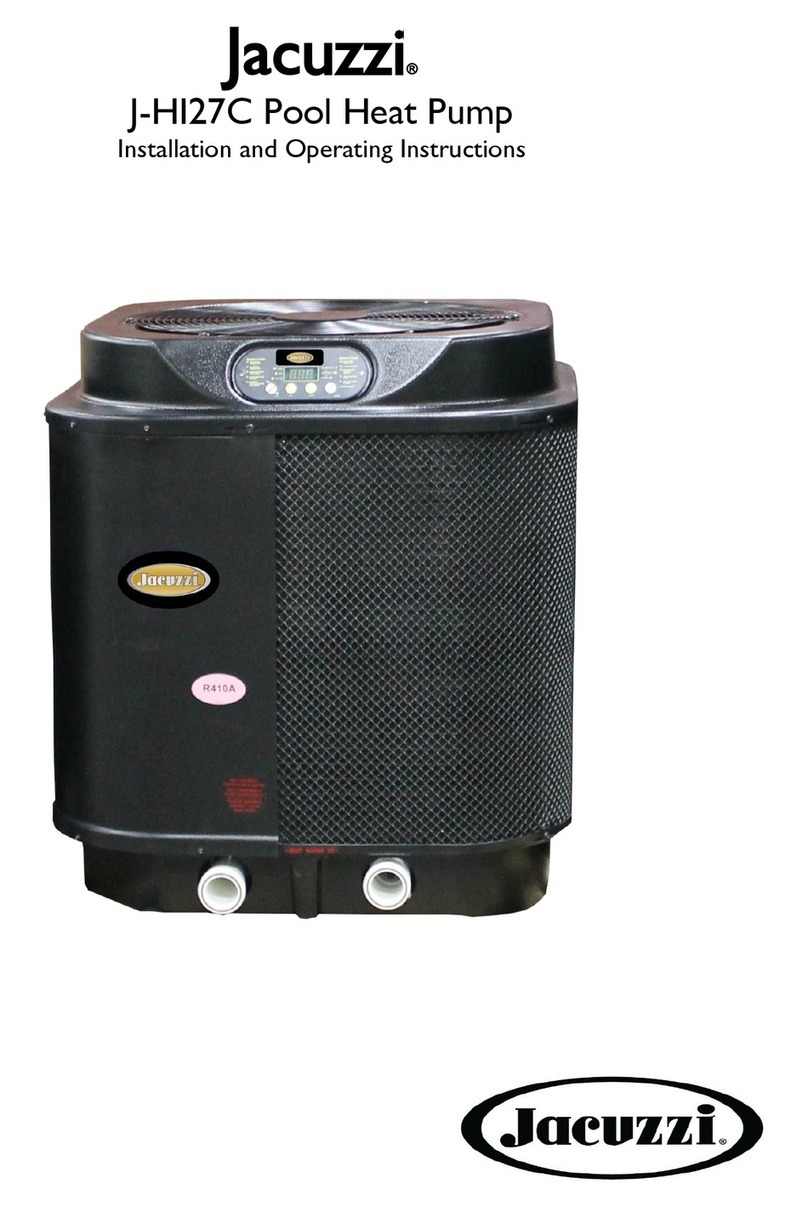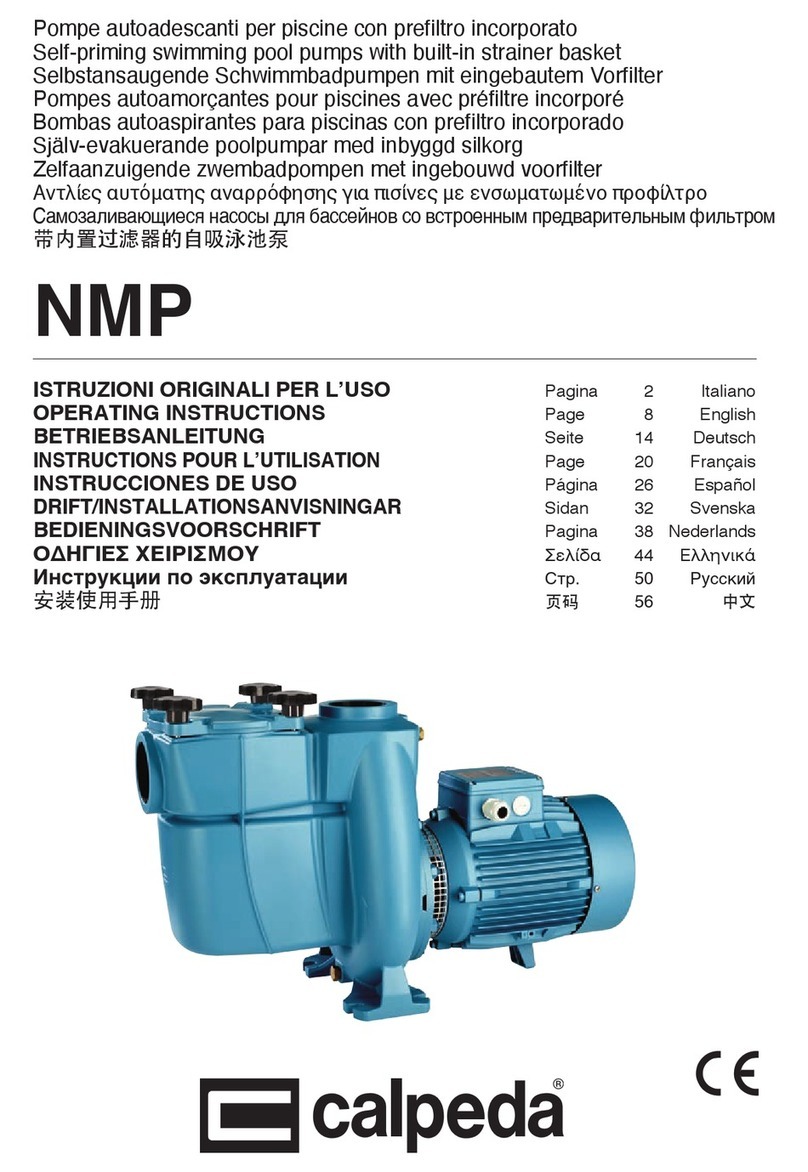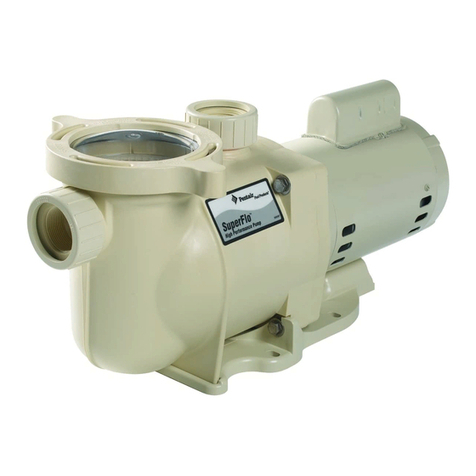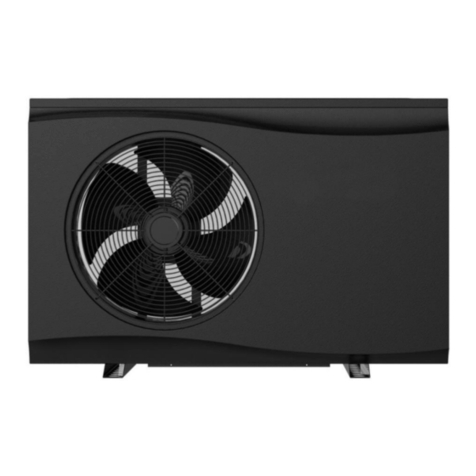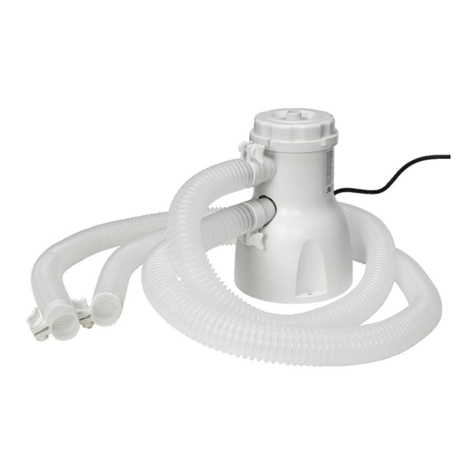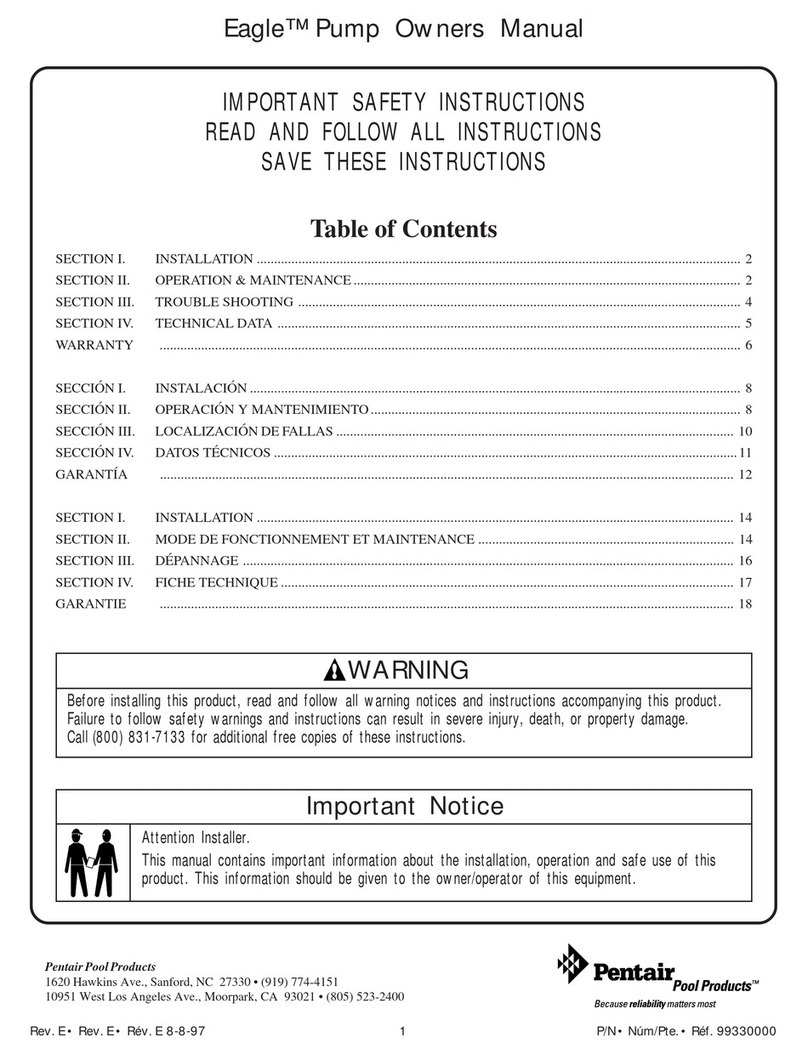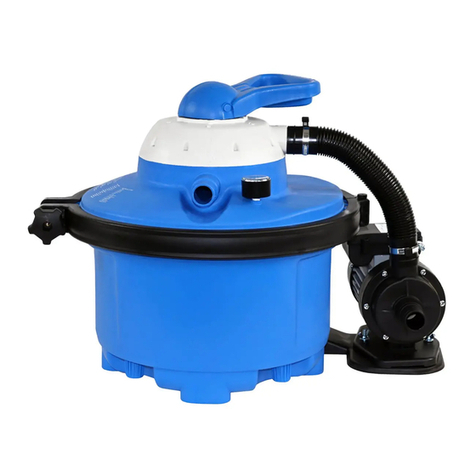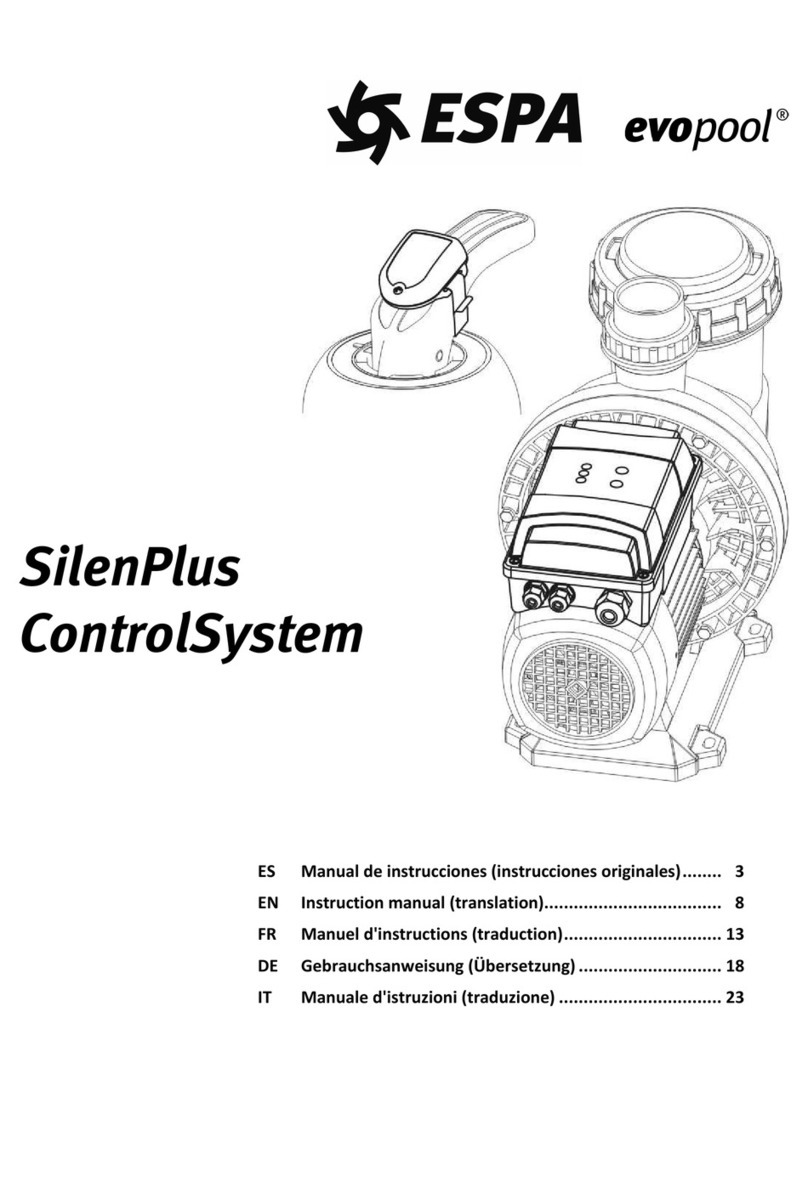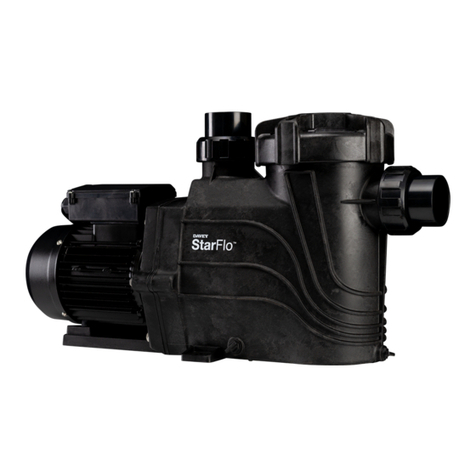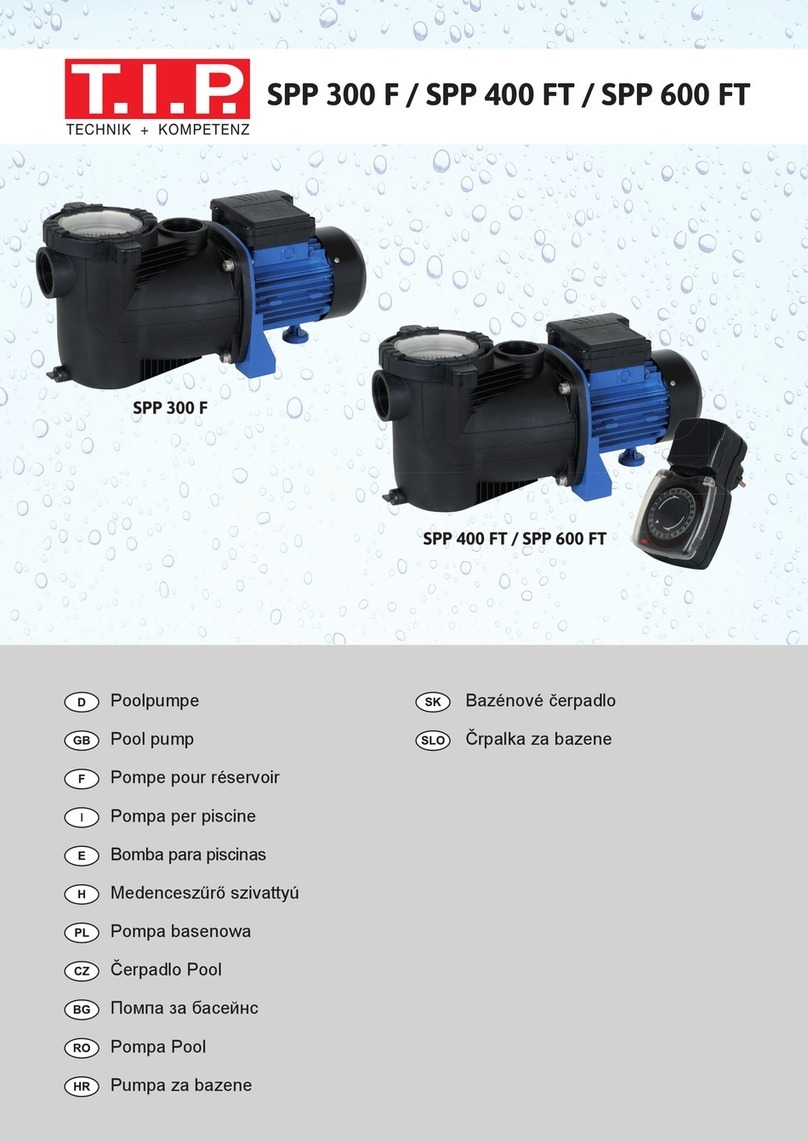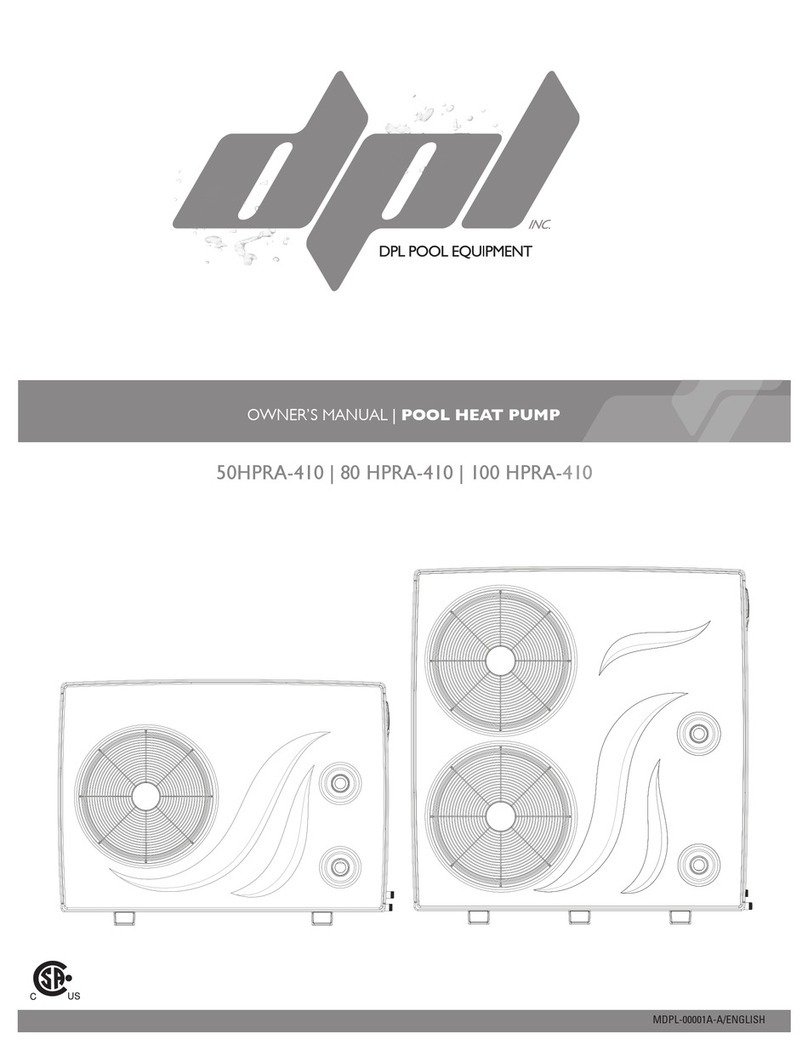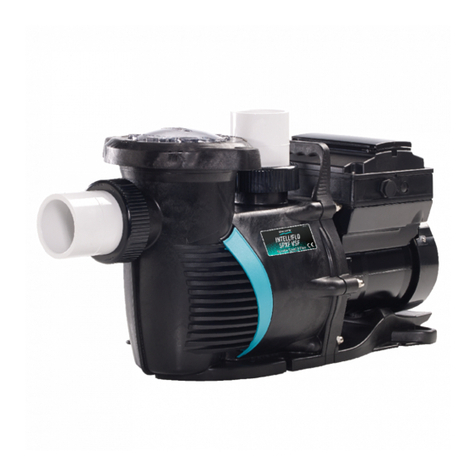OPERATION
NEVER run pump dry! Running pump dry may dam-
age seals, causing leakage and flooding! Fill pump
with water before starting motor.
Before removing trap cover:
1. STOP PUMP before proceeding.
2. CLOSE GATE VALVES in suction and discharge
pipes.
3. RELEASE ALL PRESSURE from pump and piping
system.
Fire and burn hazard. Modern motors run at
high temperatures. To reduce the risk of fire, do not allow
leaves, debris, or foreign matter to collect around the
pump motor. To avoid burns when handling the motor, let
it cool for 20 minutes before trying to work on it. An auto-
matic internal cutoff switch protects the motor from heat
damage during operation.
Do not block pump suc-
tion! To do so with body
may cause severe or fatal
injury. Small children using
pool must ALWAYS have close
adult supervision!
NOTICE: Do not block pool
return. To do so may flood area
causing damage to equipment
and water damage to surround-
ing area.
Priming Pump:
Open valves before starting
system.
Release all pressure from filter, pump, and piping system;
see the filter owner’s manual.
In a flooded suction system (water source higher than
pump), pump will prime itself when suction and discharge
valves are opened.
Pool Water:
Keep water level at least two inches above bottom of skim-
mer opening when system is not in use. Failure to do so
can allow air to enter system, causing pump to lose its
prime.
Keep pool water “balanced”. Maintain the water pH
between 7.2 and 7.6.
Do not use or allow the use of the pool by anyone
using alcohol or drugs. The effects of hot water, alco-
hol and/or drugs can cause dizziness and falling, loss of
consciousness, or heart attack.
Storage/Winterizing:
Explosion hazard. Purging the system with
compressed air can cause components to explode, with
risk of severe injury or death to anyone nearby. Use only
a low pressure (below 5 PSI), high volume blower when air
purging the pump, filter, or piping.
To prevent damage to components from fumes, store
chemicals away from pump. If possible, store chemi-
cals in another room.
NOTICE: Drain pump! Allowing pump to freeze will dam-
age pump and void warranty!
NOTICE: Do not use anti-freeze solutions (except propy-
lene glycol) in your pool system. Propylene glycol is non-
toxic and will not damage plastic system components;
other anti-freezes are highly toxic and may damage plastic
components in the system. Propylene glycol is widely used
as antifreeze in recreational vehicles.
Drain all water from pump and piping when expecting
freezing temperatures or when storing pump for a long
time (see instructions below).
Keep motor dry and covered during storage.
To avoid condensation/corrosion problems, do not cover
or wrap pump with plastic.
For outdoor/unprotected installations:
1. Pump down water level below all inlets to pool.
2. Enclose entire system in a weatherproof enclosure.
3. To avoid condensation/corrosion damage, allow ven-
tilation; do not wrap system in plastic.
4. Use a 40% propylene glycol/60% water solution to
protect pump to -50°F.
5. Follow pool manufacturer’s directions for storage of
pool.
5
Hazardous suction.
Can trap hair or
body parts, causing
severe injury
or death.
Do not block suction.
